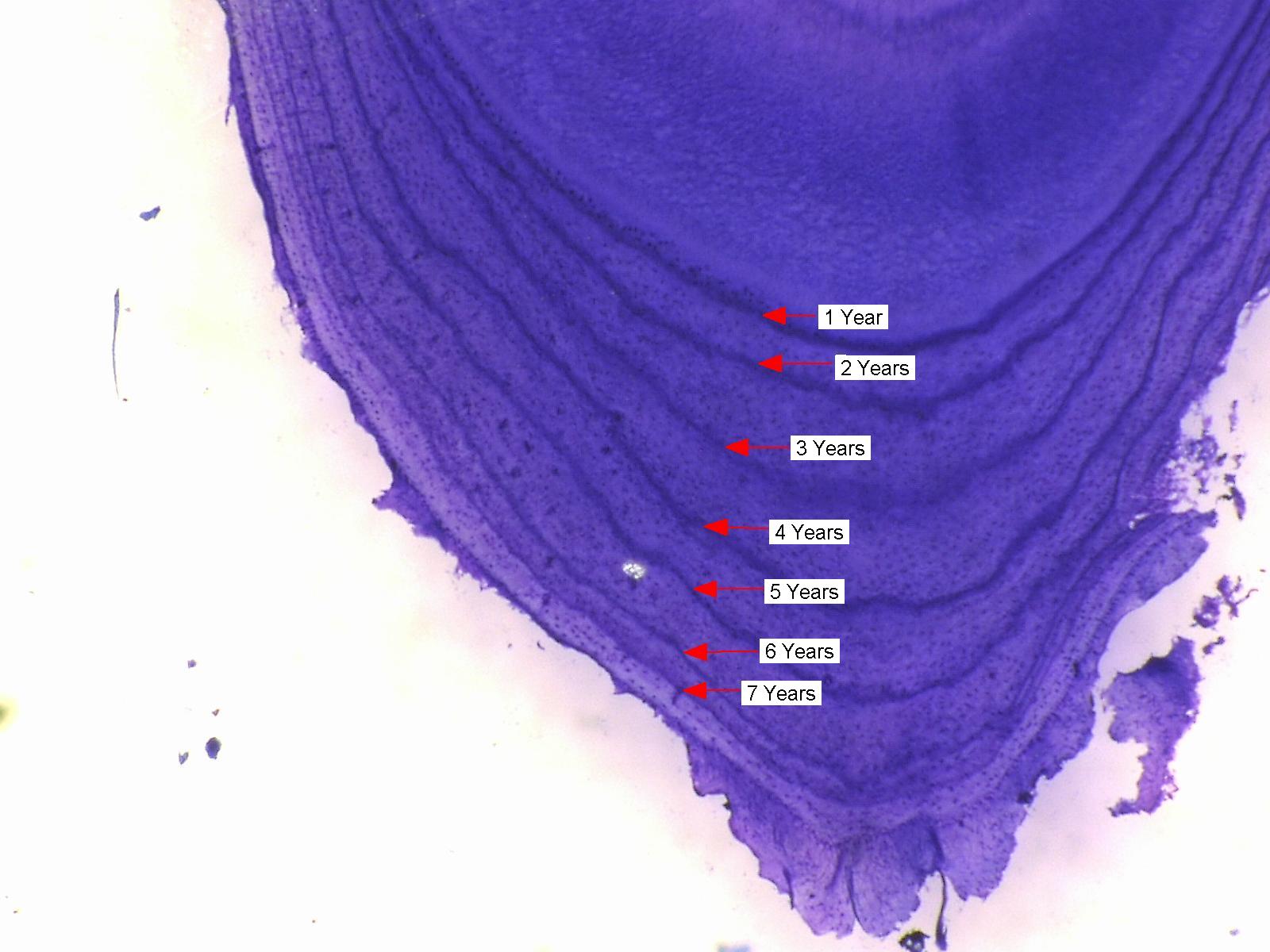Tooth aging is an important tool in wildlife management, and hunters play a vital role in helping Wyoming Game and Fish. Teeth from harvested big game and trophy animals collected by hunters, wardens and biologists from across the state are sent to the Game and Fish laboratory in Laramie. The tooth aging process determines the age of the animal, and that data is then used by regional wildlife managers to assess herd units and determine how the hunting seasons affect big and trophy game populations. This important information is used when developing future hunting seasons, and we really appreciate hunters assistance collecting teeth. The laboratory ages approximately 2,500 teeth per year.
 To age a tooth, a thin section is taken from of the root of each tooth and stained; this makes it easy to see the rings of the tooth. Just like rings in a tree, the rings in the root of the tooth will indicate the age of the animal. While some animals are harder to age than others, the general process for all the teeth is the same.
To age a tooth, a thin section is taken from of the root of each tooth and stained; this makes it easy to see the rings of the tooth. Just like rings in a tree, the rings in the root of the tooth will indicate the age of the animal. While some animals are harder to age than others, the general process for all the teeth is the same.
Wildlife managers analyze specific hunt areas each year and focus sampling efforts by collecting teeth from harvested animals at check stations, during hunter field checks or when a trophy game harvest is registered at a Game and Fish facility. Hunters may receive a tooth box in the mail and are encouraged to send in teeth when they harvest their animal that year. Hunters who provide teeth can use their license number to access the animal’s age online. Even if you do not receive a tooth box or if you harvest an animal from another state, you can still get your animal aged for a fee. Please contact the Wyoming Game and Fish Wildlife Forensic and Fish Health Laboratory for additional information (307-766-5616).
Photo: An image of the rings of a male black bear tooth.
Wildlife managers analyze specific hunt areas each year and focus sampling efforts by collecting teeth from harvested animals at check stations, during hunter field checks or when a trophy game harvest is registered at a Game and Fish facility. Hunters may receive a tooth box in the mail and are encouraged to send in teeth when they harvest their animal that year. Hunters who provide teeth can use their license number to access the animal’s age online. Even if you do not receive a tooth box or if you harvest an animal from another state, you can still get your animal aged for a fee. Please contact the Wyoming Game and Fish Wildlife Forensic and Fish Health Laboratory for additional information (307-766-5616).
Photo: An image of the rings of a male black bear tooth.
Publish Date
Answered By
Miranda Strand
Job Title
Tooth Aging Coordinator
Photo
13083345_1189755981048308_3175977623195421570_n
Ask Game ID
73
Node order
234
Parent Node
1135
